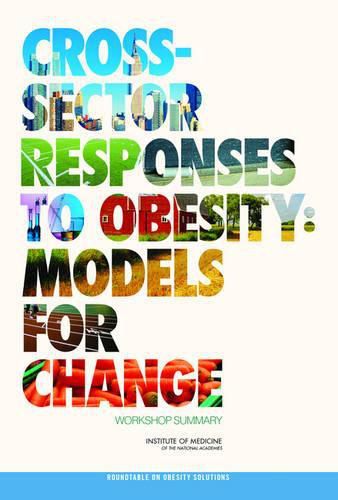Readings Newsletter
Become a Readings Member to make your shopping experience even easier.
Sign in or sign up for free!
You’re not far away from qualifying for FREE standard shipping within Australia
You’ve qualified for FREE standard shipping within Australia
The cart is loading…






Obesity affects 17 percent of children and adolescents and almost 36 percent of adults in the United States. Conservative estimates suggest that obesity now accounts for almost 20 percent of national health care spending. Until the obesity epidemic is reversed, obesity will continue to drive rates of chronic diseases such as heart disease, stroke, type 2 diabetes, and certain types of cancer.
Cross-Sector Responses to Obesity is a summary of a workshop convened by the Institute of Medicine Roundtable on Obesity Solutions in September 2014 to explore models of cross-sector work that may reduce the prevalence and consequences of obesity. This report identifies case studies of cross-sector initiatives that engage partners from diverse fields, and lessons learned from and barriers to established cross-sector initiatives.
$9.00 standard shipping within Australia
FREE standard shipping within Australia for orders over $100.00
Express & International shipping calculated at checkout
Obesity affects 17 percent of children and adolescents and almost 36 percent of adults in the United States. Conservative estimates suggest that obesity now accounts for almost 20 percent of national health care spending. Until the obesity epidemic is reversed, obesity will continue to drive rates of chronic diseases such as heart disease, stroke, type 2 diabetes, and certain types of cancer.
Cross-Sector Responses to Obesity is a summary of a workshop convened by the Institute of Medicine Roundtable on Obesity Solutions in September 2014 to explore models of cross-sector work that may reduce the prevalence and consequences of obesity. This report identifies case studies of cross-sector initiatives that engage partners from diverse fields, and lessons learned from and barriers to established cross-sector initiatives.